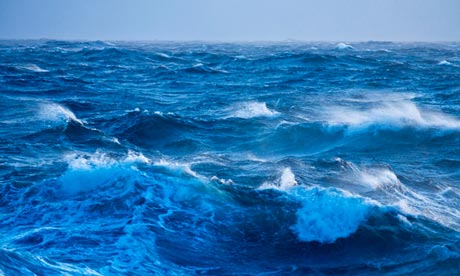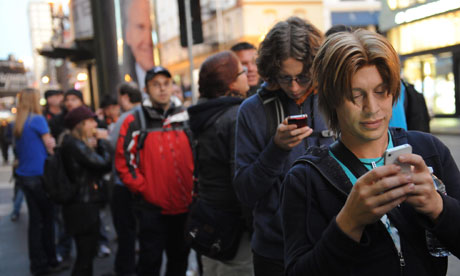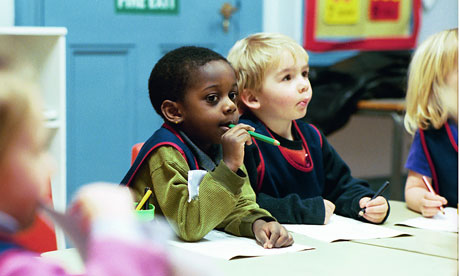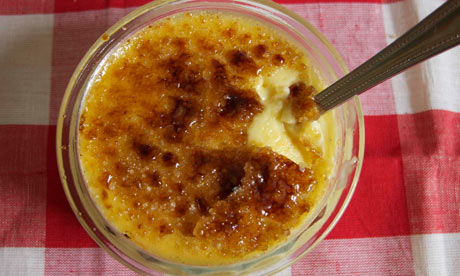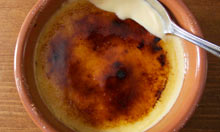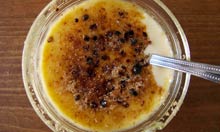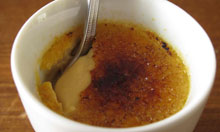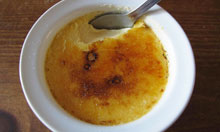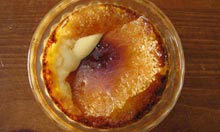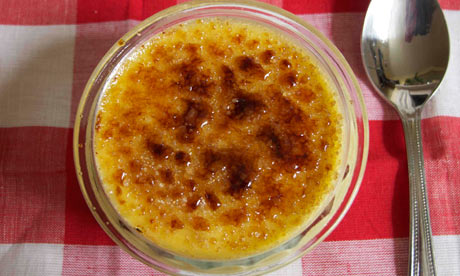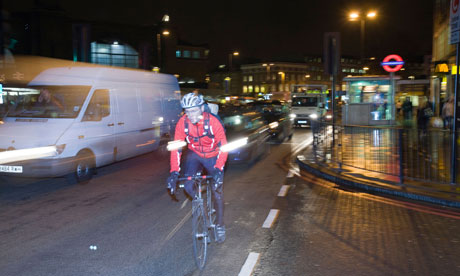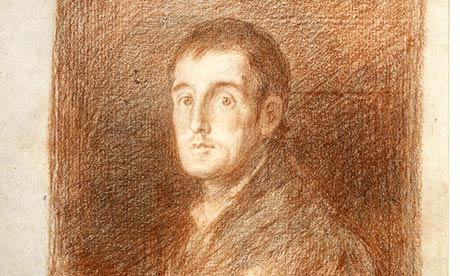From
a tomb 5,000 years old to a club famous 50 years ago, the UK is so rich
in sites it's hard to know where to start. Here historians and authors
pick their favourites
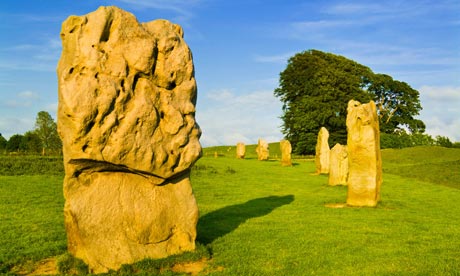
Avebury in Wiltshire, England … 'a place for introspection and assessment'.
Neolithic: Francis Pryor
 The Orkney Islands are one huge archaeological site.
There are very few places in Britain where it is possible to view
prehistoric monuments in their original settings. If a Neolithic family
were somehow magicked into the 21st century, they'd still be able to
find their way around their old sites here. Nowhere is more evocative
than the great tomb of Maes Howe by the Loch of Harray. You
stoop to pass along the entrance passage to the great chamber, where the
echoing acoustic was deliberately engineered by masters of ceremony
from 5,000 years ago.
The Orkney Islands are one huge archaeological site.
There are very few places in Britain where it is possible to view
prehistoric monuments in their original settings. If a Neolithic family
were somehow magicked into the 21st century, they'd still be able to
find their way around their old sites here. Nowhere is more evocative
than the great tomb of Maes Howe by the Loch of Harray. You
stoop to pass along the entrance passage to the great chamber, where the
echoing acoustic was deliberately engineered by masters of ceremony
from 5,000 years ago.As a student I watched Terence Stamp lust after Julie Christie on the grassy banks of Maiden Castle (maidencastle.com, free) in Dorset, (filming 1967's Far from the Madding Crowd). The scale of this place never ceases to amaze me. Within its ramparts (mostly built around 500BC) are a Neolithic enclosure, bronze age barrows and a late-Roman temple.
Avebury in Wiltshire is the only place in England that compares to Orkney for connectedness. Here the visitors can see how prehistoric sites linked together in an ever-developing ritual landscape. The scale is vast – far more spectacular, I think, than even Stonehenge. I find it a place for taking stock; for introspection and assessment.
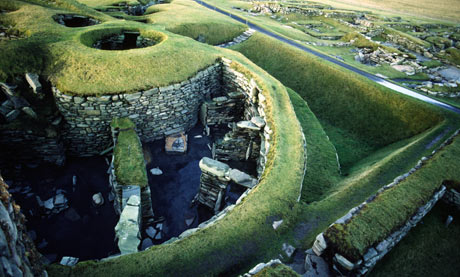 Jarlshof, Shetland Islands.
Jarlshof, Shetland Islands.
Bronze age (2500-800BC): Robert Van de Noort
 My favourite bronze age site in the UK is the ancient settlement of Jarlshof, in Sumburgh on the mainland of Shetland . Standing on the edge of the North Sea, the settlement
comprises several stone houses with internal buttresses, which are still
several metres high. You can enter and explore these houses without
restrictions. The site was occupied for many centuries after the bronze
age and also includes iron age and Pictish remains. The Old House of
Sumburgh, built by Earl Patrick in the 16th century, can be climbed for
an overview of the settlement.
My favourite bronze age site in the UK is the ancient settlement of Jarlshof, in Sumburgh on the mainland of Shetland . Standing on the edge of the North Sea, the settlement
comprises several stone houses with internal buttresses, which are still
several metres high. You can enter and explore these houses without
restrictions. The site was occupied for many centuries after the bronze
age and also includes iron age and Pictish remains. The Old House of
Sumburgh, built by Earl Patrick in the 16th century, can be climbed for
an overview of the settlement.For the brave, I recommend a visit to the copper mines of the Great Orme, near Llandudno in north Wales, the largest prehistoric mine in the world, reached by climbing the Great Orme, or taking the Victorian tram to the halfway station. Helmets are provided. Copper – and tin, the key ingredient of bronze – was mined here 3,500 years ago, using tools of bone and stone.
Flag Fen, near Peterborough , is the only place in the UK where you can see bronze age timbers in situ. Flag Fen was a series of wooden trackways constructed between two areas of high ground at a time when the sea level slowly flooded the low-lying embayment. Part of this is on view at the Preservation Hall, where sprinklers keep the timbers wet to stop them deteriorating.
Finally, I would recommend a visit to the National Maritime Museum Cornwall in Falmouth, where shipwrights and archaeologists are reconstructing a full-scale bronze age sewn-plank boat using bronze tools. This type of boat was made around 2000BC, when seafaring became important for the exchange of objects such as Beaker pottery, gold, amber, and jet. The Nebra sky disc, which was unearthed in Germany but made with tin and gold from Cornwall, is also on display.
Roman (AD43-410): Mary Beard
 I have two favourites. One is the Roman town of Wroxeter, or Viriconium , in Shropshire.
I went on excavations there when I was younger, so I have happy
memories but, more to the point, it has a wonderfully impressive
surviving bit of Roman wall, as well as an outdoor swimming pool (a
triumph of Mediterranean aspirations over British weather). And then
there's Lullingstone Roman villa, in Kent,
with its mosaic showing Jupiter, in the form of a bull, carrying poor
Europa off over the sea. And underneath there's an epigram in Latin,
parodying the beginning of Virgil's Aeneid (words to the effect of: "If
Juno had seen this going on, she'd have stirred up the storms even
quicker"). It shows that someone living there knew their Virgil well
enough to joke about it.
I have two favourites. One is the Roman town of Wroxeter, or Viriconium , in Shropshire.
I went on excavations there when I was younger, so I have happy
memories but, more to the point, it has a wonderfully impressive
surviving bit of Roman wall, as well as an outdoor swimming pool (a
triumph of Mediterranean aspirations over British weather). And then
there's Lullingstone Roman villa, in Kent,
with its mosaic showing Jupiter, in the form of a bull, carrying poor
Europa off over the sea. And underneath there's an epigram in Latin,
parodying the beginning of Virgil's Aeneid (words to the effect of: "If
Juno had seen this going on, she'd have stirred up the storms even
quicker"). It shows that someone living there knew their Virgil well
enough to joke about it.Anglo-Saxon (AD410-1066): Simon Keynes
 In roughly chronological order, the following are important sites for Anglo-Saxon England. Sutton Hoo, near Woodbridge, Suffolk is the seventh-century burial ground of the kings of East
Anglia. The main finds are on display at the British Museum . Yeavering on the edge of the Cheviots in Northumberland is the site of a seventh-century Northumbrian royal estate, where
beneath Yeavering Bell hill fort, the Anglo-Saxon kings maintained a
grand palace. At the hill fort you can see ramparts and platforms for
130 roundhouses. Bede's World in Jarrow, Tyne & Wear , is a heritage
site with exhibitions, replica buildings and a farm. It was a monastic
centre, where in about 730AD the Venerable Bede wrote his Ecclesiastical
History
of the English People, which first created for the English a sense of
their collective identity. Kids can take part in an Anglo-Saxon trial or
learn to be a warrior.
In roughly chronological order, the following are important sites for Anglo-Saxon England. Sutton Hoo, near Woodbridge, Suffolk is the seventh-century burial ground of the kings of East
Anglia. The main finds are on display at the British Museum . Yeavering on the edge of the Cheviots in Northumberland is the site of a seventh-century Northumbrian royal estate, where
beneath Yeavering Bell hill fort, the Anglo-Saxon kings maintained a
grand palace. At the hill fort you can see ramparts and platforms for
130 roundhouses. Bede's World in Jarrow, Tyne & Wear , is a heritage
site with exhibitions, replica buildings and a farm. It was a monastic
centre, where in about 730AD the Venerable Bede wrote his Ecclesiastical
History
of the English People, which first created for the English a sense of
their collective identity. Kids can take part in an Anglo-Saxon trial or
learn to be a warrior.Isle of Athelney in Somerset, is where King Alfred the Great hid from the Danes when they invaded Wessex in 878. It's where he burnt the cakes, and later built a fort and a monastery in gratitude to God for his victory. The Museum of London has a collection of Viking spears, axes and grappling irons found at the north end of London Bridge, site of several battles between the English and the Danes 1,000 years ago, during the reign of King Ethelred the Unready.
The British Library in London has a large number of manuscripts on display, including the Lindisfarne Gospels, the St Cuthbert Gospel, several manuscripts of the Anglo-Saxon Chronicle, and the manuscript of the Old English poem Beowulf
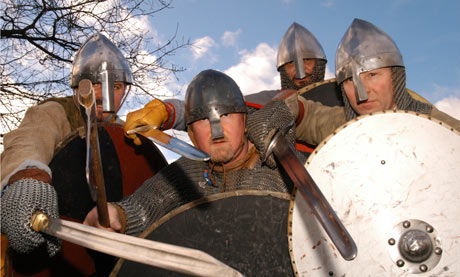
The Jorvik Viking Centre, York
 I have to start with the Wirral I'm afraid, simply
because that's where I was born and bred. Like much of the north-west
coast, the area is crammed with Viking names, including Tranmere
– the only football team in England with a Norwegian Viking name – and
now host to four spanking new road signs commemorating the site of its
former Viking assembly at Thingwall. Must-sees are the magnificent
Viking hogback tombstone at the church of St Bridgets at West Kirby and the reconstructed Irish-Norse cross, showing not pillaging but a Viking couple embracing.
I have to start with the Wirral I'm afraid, simply
because that's where I was born and bred. Like much of the north-west
coast, the area is crammed with Viking names, including Tranmere
– the only football team in England with a Norwegian Viking name – and
now host to four spanking new road signs commemorating the site of its
former Viking assembly at Thingwall. Must-sees are the magnificent
Viking hogback tombstone at the church of St Bridgets at West Kirby and the reconstructed Irish-Norse cross, showing not pillaging but a Viking couple embracing.
Vikings fans can then pop on the ferry from Liverpool and visit the Isle of Man, which, like the Wirral was once a Norse colony, with its Assembly at Tynwald Hill, in the village of St John's. Stand there and imagine you were the Viking law-speaker 1,000 years ago, then visit the superb Braaid Viking farmstead and the reconstructed longship at the Manx Museum. Then you could hop back over the Irish Sea to the Largs Viking Festival in Ayrshire before heading to more former Viking colonies in the Shetlands and Orkneys. Next year the largest ever Viking longship reconstruction will sail from Norway, past the islands to Largs, the Isle of Man and Liverpool.
Last but not least, Jorvik in York is an absolute must, and the train tour through the old Viking town is a most educational and entertaining experience.
• Steve Harding, Professor of Applied Biochemistry at Nottingham University is a Viking expert and a Knight of Norway

Lewes in East Sussex breathes history from every wall and door. Its castle dominates the town, and just outside are the remains of a great medieval priory . Founded in the 11th century, it was one of the richest monastic houses in England, with a church the size of a cathedral. In 1537 the priory was granted to Thomas Cromwell, the architect of the dissolution. Always a man in a hurry, he brought in an Italian engineer to blow up the buildings he didn't want, and built a house called Lord's Place for his son Gregory. The Victorians almost completed the destruction by putting a railway line through, but the beautiful South Downs setting survives, and it's a lovely place for a walk.
Just a moment from the priory ruins is Anne of Cleves House on Southover High Street. It's doubtful Henry VIII's unwanted fourth wife ever saw this pretty timbered manor, but it was part of her divorce settlement. Its furnished rooms include a splendid bedchamber and a kitchen. The museum displays melancholy stone carvings from the priory, and there is a gallery bristling with weaponry and ironmongery. A house on this scale, unpretentious and domestic, gives a better idea of Tudor life than many more celebrated sites, and there's a calm and pretty garden.
Michelham Priory, near Hailsham in East Sussex , was another Cromwell property. But this one was treated more gently, so the moated ruins are extensive and atmospheric. Set among orchards and vineyards, it was a small house, with just eight canons in residence in 1537. It's mellow and family-friendly, with a working watermill, a herb garden and a splendid Elizabethan barn.
Farleigh Hungerford Castle in a green valley on the Somerset-Wiltshire border, was built in the late 14th century and owned by the Hungerford family for 300 years. It's a ruin, though there is an intact chapel where knights and ladies lie on their tombs. The atmosphere is especially serene, though it's hard to imagine why, because the Hungerfords were a villainous crew. A 16th-century Hungerford had her husband strangled and his remains stuffed in the kitchen furnace. Another tried to starve his poor wife to death, but Henry VIII's headsman put an end to his activities. A 17th-century Hungerford gambled away the manor in a game of bowls. English Heritage has restored the site in an intelligent and sympathetic way.
Just where you don't expect a Tudor house, on Homerton High Street in gritty Hackney, east London stands Sutton House. It was called Bricke Place in 1535, when it was new and gleaming and built amid fields. The National Trust shows off dark panelled rooms that have survived many owners, but it's close to my heart because its builder was one of my favourite Tudors. Trained by Thomas Cromwell, Ralph Sadler attained high favour with Henry VIII, and built Bricke Place for his bride. Ralph was an ambitious young courtier and she was a widow, a servant; it was a love match; the curators will tell you about the bizarre turn that events took when Lady Sadler's first husband rose from the dead. Ralph Sadler was still working at the age of 85, in harness at the trial of Mary Queen of Scots. He outlived all his generation, and died the richest commoner in England.
 I'm amazed that Bolsover Castle in Derbyshire
doesn't cause crashes on the M1. It's perched on a hilltop near
Junction 29a south of Sheffield, and you can't help but stare as you
pass. It looks like a fairytale castle, with dinky battlements and
turrets. Although it appears older, it is a Gothic, chivalric, romantic
recreation of a medieval castle begun in the 1610s. It incorporates
up-to-the-minute details from Italy, such as naked classical gods and
goddesses having an orgy, and "lascivious beasts" decorating the
fountain of Venus in its garden.
I'm amazed that Bolsover Castle in Derbyshire
doesn't cause crashes on the M1. It's perched on a hilltop near
Junction 29a south of Sheffield, and you can't help but stare as you
pass. It looks like a fairytale castle, with dinky battlements and
turrets. Although it appears older, it is a Gothic, chivalric, romantic
recreation of a medieval castle begun in the 1610s. It incorporates
up-to-the-minute details from Italy, such as naked classical gods and
goddesses having an orgy, and "lascivious beasts" decorating the
fountain of Venus in its garden.
The Banqueting House in Whitehall, London , designed by Inigo Jones, represents the future of British architecture. Built in the 1620s, and the only surviving bit of the great, lost palace of Whitehall, the Banqueting House prefigures all those later, classical, Georgian museums and terraces and government buildings. It's easy to miss it as you walk along Whitehall, because it looks so familiar, but it really was the first of its kind. Inside, Rubens painted ceilings immortalising the Stuart dynasty. This is why, in a moment of delicious irony, the Parliamentarians chose to execute King Charles I directly outside.
Go to Ham House in Richmond, west London, for life after the Restoration, including tiny, richly decorated 17th-century closets used as repositories for jewels, secrets and silence. Charles II, his dissolute courtier buddies and his merry mistresses enjoyed themselves in interiors like these. Nearly a century from where we started, Hampton Court Palace heralds the arrival of the baroque and the influence of France rather than Italy. Built from 1689 by William and Mary, after they deposed the despotic and Catholic James II, this is a palace for a pair of constitutional monarchs. It's the British version of Versailles: Louis XIV was an absolute monarch, and his grandiloquent palace reflects his absolute power. William and Mary had given some royal power away to Parliament, so their palace is a cut-price version: beautiful, yet also warm and friendly, with cheap red brick as well as expensive white stone.
• Dr Lucy Worsley is the chief curator of Historic Royal Palaces and a TV presenter
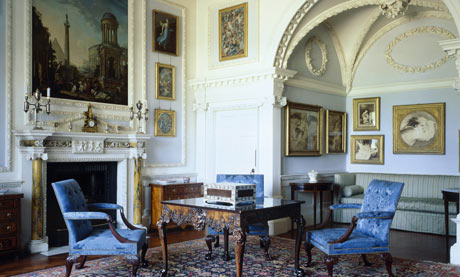 Stourhead House, Wiltshire. Photograph: Alamy
Stourhead House, Wiltshire. Photograph: Alamy A favourite place of mine to take visitors – but not before they've read a novel in preparation – is the Brontë Parsonage Museum in Haworth.
The picturesque West Yorkshire village near Bradford is surrounded by
the moorland the Brontës described in their work and which was the
setting for Emily's Wuthering Heights. In spring and summer Haworth can
be reached by steam train from Keighley. The Brontë Museum, next to a
rather Gothic cemetery, gives a good sense of the constrained
circumstances of many parsons' families at the time, and its exhibition
includes some of the tiny manuscript books with which the siblings honed
their creative skills.
A favourite place of mine to take visitors – but not before they've read a novel in preparation – is the Brontë Parsonage Museum in Haworth.
The picturesque West Yorkshire village near Bradford is surrounded by
the moorland the Brontës described in their work and which was the
setting for Emily's Wuthering Heights. In spring and summer Haworth can
be reached by steam train from Keighley. The Brontë Museum, next to a
rather Gothic cemetery, gives a good sense of the constrained
circumstances of many parsons' families at the time, and its exhibition
includes some of the tiny manuscript books with which the siblings honed
their creative skills.
 The People's History Museum in Manchester brilliantly depicts the industrial revolution in "Cottonopolis", while in a 19th-century factory in Stoke-on-Trent, ceramicist Emma Bridgewater fires and paints her designs. A visit there is a hands-on entry into the world of industrial production.
The People's History Museum in Manchester brilliantly depicts the industrial revolution in "Cottonopolis", while in a 19th-century factory in Stoke-on-Trent, ceramicist Emma Bridgewater fires and paints her designs. A visit there is a hands-on entry into the world of industrial production.
The Birmingham Museums & Art Gallery has one of the great collections of pre-Raphaelite art in a monument to Birmingham's mid-Victorian ambition to be the Venice of the Midlands. Glasgow is a fine Victorian city, retaining much of the architecture and civic fabric lost in Liverpool and Newcastle. The Merchant Quarter gives a sense of the imperial reach and commercial riches of the Second City of Empire.
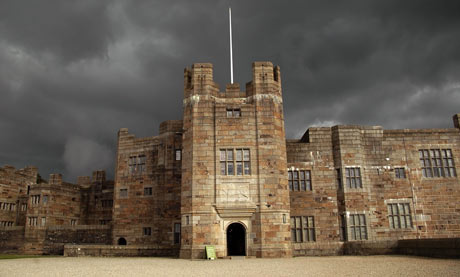 Castle Drago, Dartmoor. Photograph: Alamy
Castle Drago, Dartmoor. Photograph: Alamy
 The Edwardian age – not "the long sunlit afternoon" but an era of
dynamic social progress – is best represented by the cottage in Llanystumdwy on Wales's Llyn peninsula
where David Lloyd George, who carried the pensions, health and
unemployment bills through parliament, was raised by his shoemaker
uncle. Great British architect Edwin Lutyens built Castle Drogo on Dartmoor,
the "last castle to be built in England" in the 1910s, but his
masterpiece, and the high-water mark of Edwardian grand design, is in
India – the government buildings in New Delhi.
The Edwardian age – not "the long sunlit afternoon" but an era of
dynamic social progress – is best represented by the cottage in Llanystumdwy on Wales's Llyn peninsula
where David Lloyd George, who carried the pensions, health and
unemployment bills through parliament, was raised by his shoemaker
uncle. Great British architect Edwin Lutyens built Castle Drogo on Dartmoor,
the "last castle to be built in England" in the 1910s, but his
masterpiece, and the high-water mark of Edwardian grand design, is in
India – the government buildings in New Delhi.
Viking (AD793-1066): Stephen Harding
 I have to start with the Wirral I'm afraid, simply
because that's where I was born and bred. Like much of the north-west
coast, the area is crammed with Viking names, including Tranmere
– the only football team in England with a Norwegian Viking name – and
now host to four spanking new road signs commemorating the site of its
former Viking assembly at Thingwall. Must-sees are the magnificent
Viking hogback tombstone at the church of St Bridgets at West Kirby and the reconstructed Irish-Norse cross, showing not pillaging but a Viking couple embracing.
I have to start with the Wirral I'm afraid, simply
because that's where I was born and bred. Like much of the north-west
coast, the area is crammed with Viking names, including Tranmere
– the only football team in England with a Norwegian Viking name – and
now host to four spanking new road signs commemorating the site of its
former Viking assembly at Thingwall. Must-sees are the magnificent
Viking hogback tombstone at the church of St Bridgets at West Kirby and the reconstructed Irish-Norse cross, showing not pillaging but a Viking couple embracing.Vikings fans can then pop on the ferry from Liverpool and visit the Isle of Man, which, like the Wirral was once a Norse colony, with its Assembly at Tynwald Hill, in the village of St John's. Stand there and imagine you were the Viking law-speaker 1,000 years ago, then visit the superb Braaid Viking farmstead and the reconstructed longship at the Manx Museum. Then you could hop back over the Irish Sea to the Largs Viking Festival in Ayrshire before heading to more former Viking colonies in the Shetlands and Orkneys. Next year the largest ever Viking longship reconstruction will sail from Norway, past the islands to Largs, the Isle of Man and Liverpool.
Last but not least, Jorvik in York is an absolute must, and the train tour through the old Viking town is a most educational and entertaining experience.
• Steve Harding, Professor of Applied Biochemistry at Nottingham University is a Viking expert and a Knight of Norway
Tudor (1485-1603): Hilary Mantel

Lewes in East Sussex breathes history from every wall and door. Its castle dominates the town, and just outside are the remains of a great medieval priory . Founded in the 11th century, it was one of the richest monastic houses in England, with a church the size of a cathedral. In 1537 the priory was granted to Thomas Cromwell, the architect of the dissolution. Always a man in a hurry, he brought in an Italian engineer to blow up the buildings he didn't want, and built a house called Lord's Place for his son Gregory. The Victorians almost completed the destruction by putting a railway line through, but the beautiful South Downs setting survives, and it's a lovely place for a walk.
Just a moment from the priory ruins is Anne of Cleves House on Southover High Street. It's doubtful Henry VIII's unwanted fourth wife ever saw this pretty timbered manor, but it was part of her divorce settlement. Its furnished rooms include a splendid bedchamber and a kitchen. The museum displays melancholy stone carvings from the priory, and there is a gallery bristling with weaponry and ironmongery. A house on this scale, unpretentious and domestic, gives a better idea of Tudor life than many more celebrated sites, and there's a calm and pretty garden.
Michelham Priory, near Hailsham in East Sussex , was another Cromwell property. But this one was treated more gently, so the moated ruins are extensive and atmospheric. Set among orchards and vineyards, it was a small house, with just eight canons in residence in 1537. It's mellow and family-friendly, with a working watermill, a herb garden and a splendid Elizabethan barn.
Farleigh Hungerford Castle in a green valley on the Somerset-Wiltshire border, was built in the late 14th century and owned by the Hungerford family for 300 years. It's a ruin, though there is an intact chapel where knights and ladies lie on their tombs. The atmosphere is especially serene, though it's hard to imagine why, because the Hungerfords were a villainous crew. A 16th-century Hungerford had her husband strangled and his remains stuffed in the kitchen furnace. Another tried to starve his poor wife to death, but Henry VIII's headsman put an end to his activities. A 17th-century Hungerford gambled away the manor in a game of bowls. English Heritage has restored the site in an intelligent and sympathetic way.
Just where you don't expect a Tudor house, on Homerton High Street in gritty Hackney, east London stands Sutton House. It was called Bricke Place in 1535, when it was new and gleaming and built amid fields. The National Trust shows off dark panelled rooms that have survived many owners, but it's close to my heart because its builder was one of my favourite Tudors. Trained by Thomas Cromwell, Ralph Sadler attained high favour with Henry VIII, and built Bricke Place for his bride. Ralph was an ambitious young courtier and she was a widow, a servant; it was a love match; the curators will tell you about the bizarre turn that events took when Lady Sadler's first husband rose from the dead. Ralph Sadler was still working at the age of 85, in harness at the trial of Mary Queen of Scots. He outlived all his generation, and died the richest commoner in England.
17th century: Lucy Worsley
 I'm amazed that Bolsover Castle in Derbyshire
doesn't cause crashes on the M1. It's perched on a hilltop near
Junction 29a south of Sheffield, and you can't help but stare as you
pass. It looks like a fairytale castle, with dinky battlements and
turrets. Although it appears older, it is a Gothic, chivalric, romantic
recreation of a medieval castle begun in the 1610s. It incorporates
up-to-the-minute details from Italy, such as naked classical gods and
goddesses having an orgy, and "lascivious beasts" decorating the
fountain of Venus in its garden.
I'm amazed that Bolsover Castle in Derbyshire
doesn't cause crashes on the M1. It's perched on a hilltop near
Junction 29a south of Sheffield, and you can't help but stare as you
pass. It looks like a fairytale castle, with dinky battlements and
turrets. Although it appears older, it is a Gothic, chivalric, romantic
recreation of a medieval castle begun in the 1610s. It incorporates
up-to-the-minute details from Italy, such as naked classical gods and
goddesses having an orgy, and "lascivious beasts" decorating the
fountain of Venus in its garden.The Banqueting House in Whitehall, London , designed by Inigo Jones, represents the future of British architecture. Built in the 1620s, and the only surviving bit of the great, lost palace of Whitehall, the Banqueting House prefigures all those later, classical, Georgian museums and terraces and government buildings. It's easy to miss it as you walk along Whitehall, because it looks so familiar, but it really was the first of its kind. Inside, Rubens painted ceilings immortalising the Stuart dynasty. This is why, in a moment of delicious irony, the Parliamentarians chose to execute King Charles I directly outside.
Go to Ham House in Richmond, west London, for life after the Restoration, including tiny, richly decorated 17th-century closets used as repositories for jewels, secrets and silence. Charles II, his dissolute courtier buddies and his merry mistresses enjoyed themselves in interiors like these. Nearly a century from where we started, Hampton Court Palace heralds the arrival of the baroque and the influence of France rather than Italy. Built from 1689 by William and Mary, after they deposed the despotic and Catholic James II, this is a palace for a pair of constitutional monarchs. It's the British version of Versailles: Louis XIV was an absolute monarch, and his grandiloquent palace reflects his absolute power. William and Mary had given some royal power away to Parliament, so their palace is a cut-price version: beautiful, yet also warm and friendly, with cheap red brick as well as expensive white stone.
• Dr Lucy Worsley is the chief curator of Historic Royal Palaces and a TV presenter
 Stourhead House, Wiltshire. Photograph: Alamy
Stourhead House, Wiltshire. Photograph: AlamyVictorian (1837-1901): Ann Heilmann
 A favourite place of mine to take visitors – but not before they've read a novel in preparation – is the Brontë Parsonage Museum in Haworth.
The picturesque West Yorkshire village near Bradford is surrounded by
the moorland the Brontës described in their work and which was the
setting for Emily's Wuthering Heights. In spring and summer Haworth can
be reached by steam train from Keighley. The Brontë Museum, next to a
rather Gothic cemetery, gives a good sense of the constrained
circumstances of many parsons' families at the time, and its exhibition
includes some of the tiny manuscript books with which the siblings honed
their creative skills.
A favourite place of mine to take visitors – but not before they've read a novel in preparation – is the Brontë Parsonage Museum in Haworth.
The picturesque West Yorkshire village near Bradford is surrounded by
the moorland the Brontës described in their work and which was the
setting for Emily's Wuthering Heights. In spring and summer Haworth can
be reached by steam train from Keighley. The Brontë Museum, next to a
rather Gothic cemetery, gives a good sense of the constrained
circumstances of many parsons' families at the time, and its exhibition
includes some of the tiny manuscript books with which the siblings honed
their creative skills. Tristram Hunt
 The People's History Museum in Manchester brilliantly depicts the industrial revolution in "Cottonopolis", while in a 19th-century factory in Stoke-on-Trent, ceramicist Emma Bridgewater fires and paints her designs. A visit there is a hands-on entry into the world of industrial production.
The People's History Museum in Manchester brilliantly depicts the industrial revolution in "Cottonopolis", while in a 19th-century factory in Stoke-on-Trent, ceramicist Emma Bridgewater fires and paints her designs. A visit there is a hands-on entry into the world of industrial production.The Birmingham Museums & Art Gallery has one of the great collections of pre-Raphaelite art in a monument to Birmingham's mid-Victorian ambition to be the Venice of the Midlands. Glasgow is a fine Victorian city, retaining much of the architecture and civic fabric lost in Liverpool and Newcastle. The Merchant Quarter gives a sense of the imperial reach and commercial riches of the Second City of Empire.
 Castle Drago, Dartmoor. Photograph: Alamy
Castle Drago, Dartmoor. Photograph: Alamy
Edwardian (1901-1910): Roy Hattersley
 The Edwardian age – not "the long sunlit afternoon" but an era of
dynamic social progress – is best represented by the cottage in Llanystumdwy on Wales's Llyn peninsula
where David Lloyd George, who carried the pensions, health and
unemployment bills through parliament, was raised by his shoemaker
uncle. Great British architect Edwin Lutyens built Castle Drogo on Dartmoor,
the "last castle to be built in England" in the 1910s, but his
masterpiece, and the high-water mark of Edwardian grand design, is in
India – the government buildings in New Delhi.
The Edwardian age – not "the long sunlit afternoon" but an era of
dynamic social progress – is best represented by the cottage in Llanystumdwy on Wales's Llyn peninsula
where David Lloyd George, who carried the pensions, health and
unemployment bills through parliament, was raised by his shoemaker
uncle. Great British architect Edwin Lutyens built Castle Drogo on Dartmoor,
the "last castle to be built in England" in the 1910s, but his
masterpiece, and the high-water mark of Edwardian grand design, is in
India – the government buildings in New Delhi.